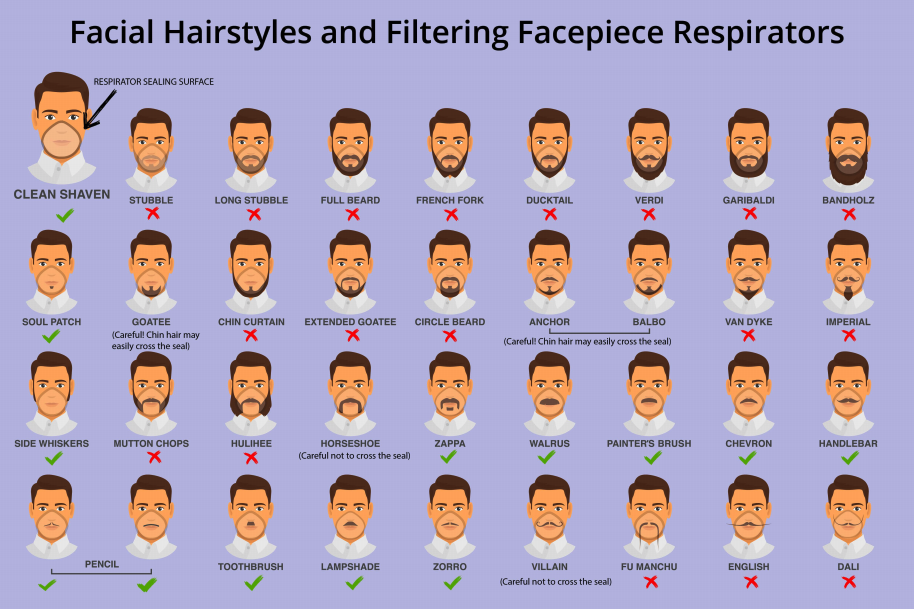Some beards could make face masks ineffective, according to CDC
Facial hair styles such as mutton chops can interfere with effectiveness of respirators

Your support helps us to tell the story
From reproductive rights to climate change to Big Tech, The Independent is on the ground when the story is developing. Whether it's investigating the financials of Elon Musk's pro-Trump PAC or producing our latest documentary, 'The A Word', which shines a light on the American women fighting for reproductive rights, we know how important it is to parse out the facts from the messaging.
At such a critical moment in US history, we need reporters on the ground. Your donation allows us to keep sending journalists to speak to both sides of the story.
The Independent is trusted by Americans across the entire political spectrum. And unlike many other quality news outlets, we choose not to lock Americans out of our reporting and analysis with paywalls. We believe quality journalism should be available to everyone, paid for by those who can afford it.
Your support makes all the difference.The Centers for Disease Control and Prevention (CDC) has warned that facial hair may interfere with the effectiveness of face masks and respirators used to combat the spread of diseases such as coronavirus.
As the deadly virus, which has infected more than 81,000 people, continues to spread around the globe, millions of people are relying on face masks to keep them from spreading or coming in contact with germs.
However, according to a 2017 graphic regarding facial hair and respirator use shared by the health organisation, having a beard, stubble, or mutton chops can interfere with the protection provided by the mask, which works to remove contaminants from the air and covers at least the nose and mouth.
“If your respirator has an exhalation valve, some of these styles may interfere with the valve working properly if the facial hair comes in contact with it,” the graph explains.
Other facial hair styles that may present a problem include chin curtains, extended goatees, circle beards, hulihee, French fork and ducktail, the graphic states.
Those who have a soul patch, side whiskers, pencil moustache, walrus moustache or handlebar moustache are okay, however.
According to the graphic, facial hair that is safe for respirator use also includes toothbrush, lampshade, Zorro, chevron, and zappa.
On social media, where the graphic has gone viral amid the influx in people purchasing and wearing face masks, people were amused by the in-depth chart.
“We all knew the age of facial hair would come crashing down someday I just didn't think it would be coronavirus and the CDC that did it,” one person tweeted.
Another said: “If you didn’t know there is a type of facial hair called houlihee, coronavirus induced the CDC to address this gap in your knowledge. A propos face-fitting masks.”
Those who have problematic facial hair shouldn’t worry, however, as the CDC does not advise the routine use of respirators outside of the workplace, nor does it recommend that healthy individuals wear face masks to protect against coronavirus.
“There’s little evidence they are very effective,” Jimmy Whitworth, professor of international public health at the London School of Hygiene and Tropical Medicine previously told The Independent regarding face masks. “They’re more beneficial if you have a virus and don’t want to pass it on than to prevent catching anything.”
Join our commenting forum
Join thought-provoking conversations, follow other Independent readers and see their replies
Comments